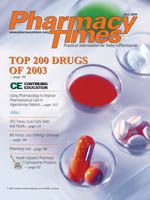Publication
Article
Pharmacy Times
Counterfeit Drugs and the "Secondary Market"
Over the last several years, the growing number of high-profileoccurrences in which counterfeit drugs have been discovered on theshelves of hospitals and community pharmacies has made the topic ofcounterfeit drugs a great concern. Pharmacists, pharmaceutical manufacturers,distributors, and patients are all asking the question, how could theseoccurrences ever happen? The solution to the problem will be challenging, butthe answer to the question is simple. Opportunity, technology, and greedare involved.
The traditional supply chain—manufacturer to distributor to pharmacy topatient—is now complicated by drug availability from secondary distributorsand traders, Internet sites, reimportation entities, and compoundingpharmacies. Almost all of these nontraditional sources are legitimate andmake wholehearted attempts to guarantee their products' quality and origin.These sources, however, have technological capabilities that are associatedwith high-quality label production—including bar codes, repackaging,and acquisition by telephone or the Internet. These capabilities haveenabled unethical individuals and businesses to capitalize on the opportunityto make an enormous amount of money with little risk.
Greed also drives some of our own colleagues to contribute to the counterfeitproblem. Drugs are being diverted from the legitimate supply chainand resold at discounted prices (but at a sizable profit). Instances have beenreported in which expired drugs have been relabeled and resold. The problemis compounded when these legitimate drugs are adulterated, repackaged,and resold.
Admittedly, there are many laws on the books that should deter counterfeiting,but the bureaucratic judicial and legislative processes already havebeen overwhelmed by the frequency and complexity of the fraud. One canonly hope that criminals, including pharmacists, who are engaged incounterfeiting activities will receive severe penalties. If the national newsmedia highlight successful prosecution and penalties, the deterrent willbe even more effective. Additional technology—in the form of an enhancedbar code or a radio frequency identification tag—is being consideredas a supplemental strategy to deter counterfeiting.
The wholesale drug distributors and the pharmaceutical industry are developingstrategies to eliminate counterfeiting, but we may not warmly embracethe changes that occur. I recently received a letter from Abbott'sPharmaceutical Products Division, announcing its intent not to distributeits products through wholesalers or distributors that "participate in secondarymarket purchasing/trading activities." Although I applaud thisbold decision, I do not look forward to a return to the 1970s, when we had topurchase directly from almost all manufacturers. Without a doubt, having todo so will add more cost to the system and will be a definite step backwards insupply-chain management.
We as pharmacists can take many steps to minimize, if not eliminate,the counterfeit-drug problem. First, we must ensure that no drugs arediverted from our places of business. We must strive to eliminate purchasesfrom secondary-market purveyors, regardless of the temptation to improveoperating margins. When legitimate supply-chain distributorsacquire drugs from the secondary market, they must agree to be heldaccountable for the quality and integrity of the products they ship.Finally, we must hold each other accountable for guaranteeing thequality and integrity of our drug supply, and, when fraud created bygreedy and unethical pharmacists is discovered, we must insist that theynever again have the opportunity to practice pharmacy—ever!







